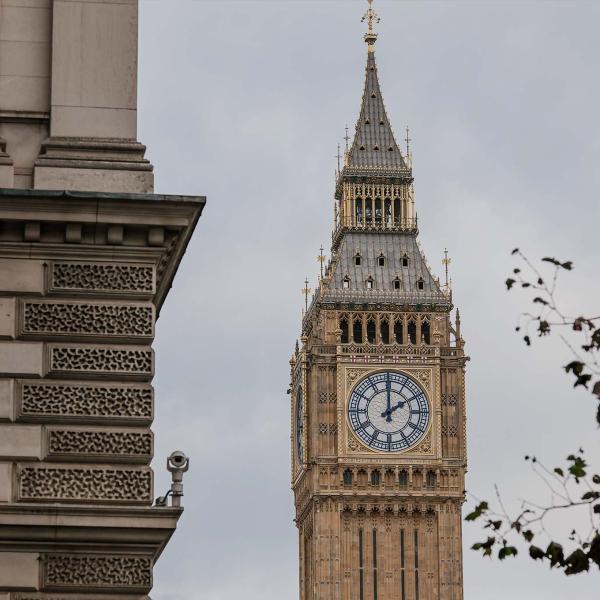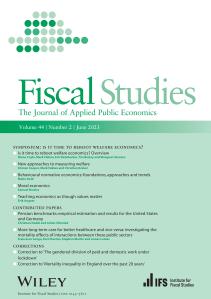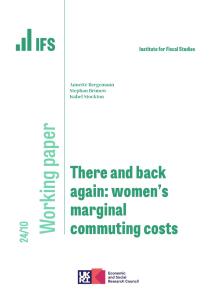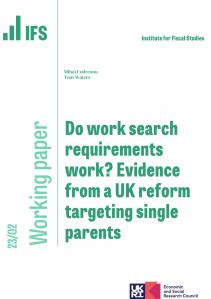After much delay, last month the government finally announced how its replacement for EU regional development funding – the Shared Prosperity Fund – will be allocated across the country. In spite of it being almost five years since the Fund was first announced, the answer for England at least, is: in much the same was as EU funds were prior to Brexit. This is a real missed opportunities, with inequities in the EU funding regime that could have been addressed, instead entrenched in the new system.
The UK Shared Prosperity Fund is a missed opportunity
In particular, the government announced that each Local Enterprise Partnership (or LEP) area in England will, by 2024-25, receive the same real-terms level of funding as it received under the EU funding regime. It is only with LEPs that a new index of need will be used to allocate funds to individual local authority districts.
This seems to be a case of politics trumping economics. The political attraction is that the losers (and winners) will be hidden: while information on how much EU funding was allocated to each LEP area was published, figures on how much was spent in each local authority district are not readily available. But the economics is dubious.
First, giving each LEP area the same real-terms funding does not account for the fact that some have seen their population rise 10% since 2013, while others have seen barely any population growth at all. Second, the latest set of EU allocations themselves largely replicated those made in the 2007 to 2013 budget period, so reflect the circumstances of different regions in the early to mid-2000s – almost 20 years ago. And third, arbitrary rules that give areas with GDP per person of less than 75% of the EU average far more funding than areas just a little bit less poor will continue to disadvantage areas like South Yorkshire, Lincolnshire and Teesside.
With funding only confirmed until 2024-25, we can hold out hope that these issues will be tackled in the next Spending Review period. If not, one of the most obvious areas where ‘taking back control’ could improve policy will have been squandered.
However, while important for economic development funding, the Shared Prosperity Fund pales into insignificance compared to overall local government funding in England. This is another area where reform has been years in the making, and where announcements could be made following the local elections. But will this be a similarly damp squib? Or has the government hoarded its political capital to deal with the political fallout of a more radical change?
Will the Fair Funding Review fare better?
The Fair Funding Review is supposed to deliver both a new set of formulas for estimating the relative spending needs of different local authorities, and a more rational overall funding system that better takes into account spending needs and revenue-raising capacity. This is long overdue. The current spending needs formulas use data that is now around ten years ago and were originally devised in the mid-2000s. There hasn’t been a well-functioning funding system that takes account of both spending needs and revenue-raising capacity since the mid-2000s either. Funding allocations are therefore based on increasingly out-of-date data and arbitrary and ad hoc decisions.
This is what prompted the Fair Funding Review in the first place. But it also makes it harder to deliver the Review, especially in the context of a funding environment that looks increasingly tight, not least due to rising inflation. That’s because the ‘fair’ funding allocations implied by the new formulas and funding system are likely to differ significantly from the out-of-date and arbitrary allocations local authorities currently receive. Moving to the new allocations would therefore create many big losers who would see their real-terms funding cut – and this group who would likely be much more vocal than those winning.
The government’s timidity with the Shared Prosperity Fund means its not clear that it is willing to bear this type of political pain, especially given much more funding will be at stake. It must be tempting to continue to roll over existing funding allocations, perhaps with a few tweaks– such as taking account of projected differences in population growth when calculating increments to funding.
However, perhaps that is too pessimistic. The government has said on a number of occasions over the last few months that it will complete the review, and that it sees it as part of its ‘levelling-up’ agenda. Local authorities have been told that much of this year’s grant funding increase is excluded from any transitional protection scheme – which practically giving the government some wiggle room to redistribute funding and politically signals that there will be winners and losers.
The hope must therefore be that the government has saved some of its remaining political capital for the Fair Funding review. This will create losers as well as winners, so will not be universally welcomed. And some form of transitional scheme to phase in the full changes in funding allocations will not only be necessary politically but also beneficial from a service-provision and value-for-money perspective. But without an up to date way to assess how much funding different local authorities need, and a more coherent system that properly takes account of these assessments, there will be no way to ensure that the £50 billion of core local government funding is aligned with the levelling-up agenda. If it cannot deliver change after years of promising it for local government funding, what hope is there for changes to education and health funding which must also surely be part of that agenda?
In other words, if the Fair Funding Review becomes a repeat of the Shared Prosperity Fund, it increases the risk that the government’s flagship levelling up agenda remains little more than a slogan. A damp squib indeed.
This article was originally published in the MJ. This article can be accessed by subscribers to the MJ at: https://www.themj.co.uk/Will-the-fair-funding-review-be-another-damp-squib/223264









